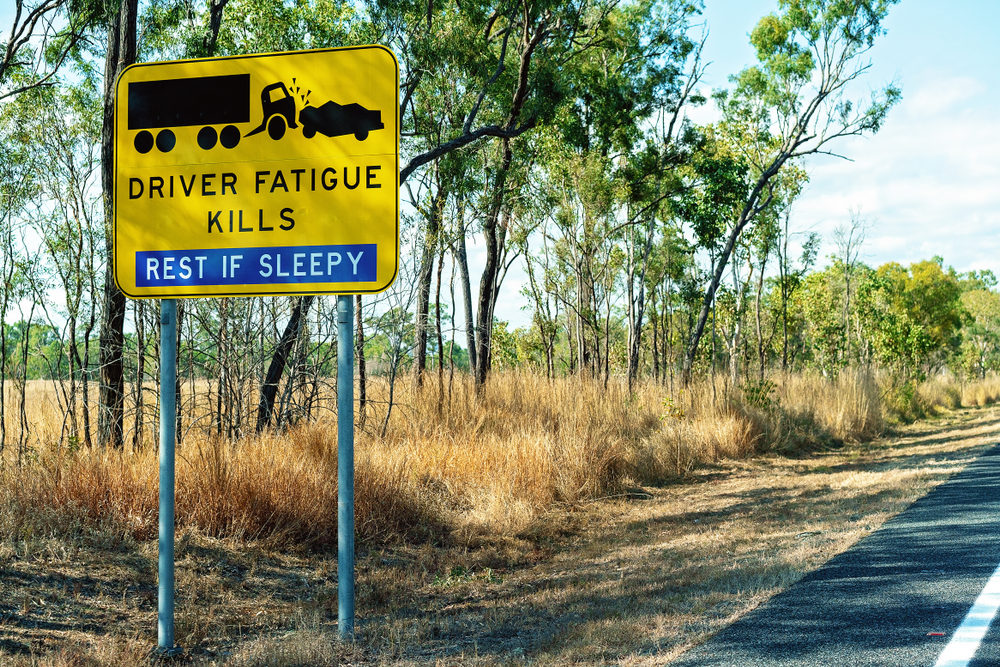
I recently rewatched the early Humphrey Bogart classic They Drive by Night. I had forgotten that Bogart is not the star of the 1940 film, but what happens to his character resonated greatly with me as a Virginia personal injury lawyer.
Playing one of two independent produce truck-driving brothers in California who spend weeks at a time making runs between Los Angeles and San Francisco, Bogart suffers from chronic sleep deprivation. The problem eventually catches up with him when he nods off behind the wheel and runs off the side of the road.
He survives the crash but loses his right arm to amputation after doctors decide it is too damaged to be saved. Another pair of truck drivers introduced earlier in the movie die in a similar drowsy driving crash that Bogart and his brother attempt to stop before witnessing it in real time.
LEARN MORE
- Why Crashes Caused by Commercial Truck Drivers Raise Tough Legal Issues
- What Are Frequent Causes of Large Truck Accidents?
- 5 Signs a Commercial Truck Driver May Be Falling Asleep at the Wheel
Both wrecks are played for tragic irony. The drivers who lose their lives had that very day paid off their truck loan, and the head operator was going home to enjoy a brief vacation with his wife. Bogart and his brother, played by George Raft, live out a nearly identical story. The rest of the movie involves a femme fatale, a murder and an attempt to frame Raft’s character. That’s all beside my point.
The message that hit me—almost certainly unintended by the screenwriters, director and author of the novel that served as the movie’s source material—was that commercial truck drivers must get adequate rest. When fatigued truckers take the wheel, they make irreversible, sometimes deadly mistakes.
Art Imitates Life
In the very real world of 2020, the Federal Motor Carrier Safety Administration (FMCSA) regulates commercial trucking. According to the agency, 13 percent of commercial motor vehicle crashes (think tractor-trailers and tour buses) happened when the driver was fatigued. That statistic only surprises to the degree that it seems a little low.
The nature of the trucking industry places great pressure on drivers to operate at night to avoid highway traffic and to skip rest breaks to meet deadlines. Making money demands putting in long hours when the body would prefer to be sleeping and sustaining a consistent record for on-time delivery.
But when commercial truck drivers grow fatigued, they become dangerous. This is true for every driver, by the way.
The National Institute for Occupational Safety and Health lists the effects of driver fatigue as
- Nodding off
- Reacting more slowly to changing road conditions, other drivers, or pedestrians
- Making poor decisions
- Drifting from your lane
- Experiencing “tunnel vision” (when you lose sense of what’s going on in the periphery)
- Experiencing “microsleeps” (brief sleep episodes lasting from a fraction of a second up to 30 seconds)
- Forgetting the last few miles you drove
Following the Rules Reduces Fatigue
Federal and state regulators recognized the problem of too-tired truckers decades ago and set limits on the hours that commercial drivers can operate without taking short and extended rest breaks. Violating the rules can result in fines and CDL suspensions. Trucking companies also face penalties for allowing or encouraging drivers to violate hours of service rules.
During 2020, the FMCSA and Virginia Department of Transportation placed the following requirements on commercial drivers.
Hours of Service Rules
|
PROPERTY-CARRYING DRIVERS |
PASSENGER-CARRYING DRIVERS |
| 11-Hour Driving Limit May drive a maximum of 11 hours after 10 consecutive hours off duty. |
10-Hour Driving Limit May drive a maximum of 10 hours after 8 consecutive hours off duty. |
| 14-Hour Limit May not drive beyond the 14th consecutive hour after coming on duty, following 10 consecutive hours off duty. Off-duty time does not extend the 14-hour period. |
15-Hour Limit May not drive after having been on duty for 15 hours, following 8 consecutive hours off duty. Off-duty time is not included in the 15-hour period. |
| Rest Breaks May drive only if 8 hours or less have passed since end of driver’s last off-duty or sleeper berth period of at least 30 minutes. |
60/70-Hour Limit May not drive after 60/70 hours on duty in 7/8 consecutive days. |
Beyond those technicalities, the FMCSA also recommends that truck drivers practice these six rules:
- Sleep for 6-8 hours between long driving shifts.
- Do not skip meals, eat at irregular times or eat large meals right before going to bed. Poor dietary habits make sleeping well more difficult.
- Pull over and nap when feeling tired during a shif
- Avoid prescription medications and over-the-counter remedies that list drowsiness as a side effect.
- Recognize that yawning, heavy eyes and blurred vision are signs of drowsiness.
- Do not expect turning up the radio, drinking coffee or opening a window to keep you alert. At best, those “tricks” will induce a false confidence in one’s ability to stay awake and focused on driving safely.
EJL

An experienced personal injury attorney with dual licensure in Virginia and North Carolina, Eric Washburn received a B.B.A. in Finance from James Madison University—initially worked in the information technology field before obtaining his law degree from Thomas M. Cooley Law School in Lansing, Michigan. Once an Assistant Commonwealth’s Attorney in Danville, Va., Eric has been recognized by Super Lawyers Magazine as a “Rising Star” Super Lawyer in Virginia since 2014.









Comments for this article are closed.